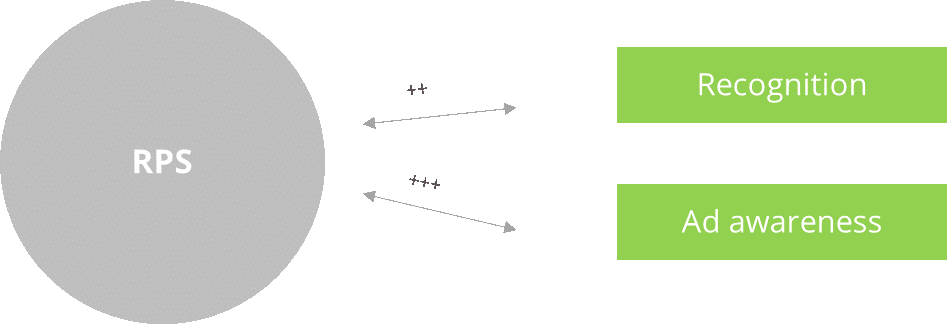What is the best KPI for measuring media?
Published on 27 12 2018In our Brand Growth study which is related to media, we spoke with over 50 different CMO’s. We found that most marketers were not satisfied with the data they use to steer media. Something is missing and this particularly relevant for deciding when “always on” is really on and not “always off” and how to make sure that bursting and wasting media money is avoided. That is why DVJ has developed a new KPI that represents all media combined: The Reality Performance Score.
Client’s challenge
Marketers mostly look at expenditures and GRP’s when it comes to media. But expenditures are sometimes difficult to use because they’re hard to compare between channels. In addition, you don’t have GRP’s for all media. There are for example hardly any GRP’s for digital media. We therefore see that a lot of the analyses that companies do, will not give the right insights and are hard to use to plan media.
The case
Expenditures and GRP’s do not consider the way our memory works and the strength of the creative. Spending or GRP’s are measured week by week and we hardly take into consideration the net weight of cumulated media and especially not the cumulated weight of all media. There is a need for finding the cumulated weight of media and integrate that in our analyses and models.
The approach
That’s why we have developed an innovative measure for media contacts to analyse the impact of media channels: The Reality Performance Score. RPS is a new KPI that represents the real number of contacts that brands have with consumers. RPS compares each media to another and evaluates them. It weighs each media differently based on the opportunity people have to engage with that medium and notice the ad. This differs if you’re for instance watching a video online, or at the cinema. On top of that, RPS looks at the decay effect of all media as a result of advertising memory. RPS look back at the number of contacts from last week and ads a part of that to this week. It’s an intelligent algorithm.
Finally, we have integrated the possibility to use the strength of the media as well. As a result, RPS is the first real KPI that represents the total sum of all media, as shown in Figure 1.

Figure 1
But what can you do with RPS?
RPS helps us understand the relationship and the strength of the relationship, with all relevant marketing KPI’s. Such as; sales, revenues, website visits, Facebook visits, awareness attitude, consideration, preference, etc. The correlation with RPS can be used to understand the effectiveness of media. It can help in defining the most effective advertiser in each category, the most effective campaign or the most effective medium.
We are also able to plan better when using RPS. With RPS we can pinpoint the minimum and maximum number of contacts that is needed to be effective and impact a KPI. We can even give clients a limit on what to spend, in order not to waste money when additional contacts don’t lead to additional results.
By using RPS we will gain control over advertising and communication. We can plan the most effective amount of contacts that an advertiser needs. We even built a planning tool that can be used by advertisers and their media agencies as part of our tracking program.
Is it really better to use RPS?
To validate the RPS compared to expenditures and GRP’s, we performed a large meta-analysis. For 52 weeks DVJ measured over 300 ads from more than 30 brands, in 5 different categories. For each of these brands we have created time series data with marketing KPI’s, expenditures, GRP’s and RPS.
The results
The results were promising and eye-opening to the people involved.
- We found that there is NOT a significant relation between expenditures and advertising. This implies that a lot of the marketing mix modelling that is taken place should stop working with expenditures in their models!
- The relation between GRP’s and marketing KPI’s is weak. If there isn’t another option, we recommend working with GRP’s instead of expenditures.
- However, the strongest and most significant relation was with RPS, as shown in Figure 2. For almost all brands we saw a significant relation with RPS and the different marketing KPI’s.

Figuur 2
Client’s benefit
This validation study proved that there is a new KPI that represents all media (the holy grail) and this new KPI is linked to measuring marketing effectiveness. It outperforms the traditional KPI’s like expenditures and reach and offers lots of possibilities to plan campaigns more effectively.
Based on all the work we have done so far, we definitely see that bursting can be a waste of money. But, an even bigger problem is that always on is in most cases always off. This leads to a waste of money as well and affects the smaller advertisers even more.